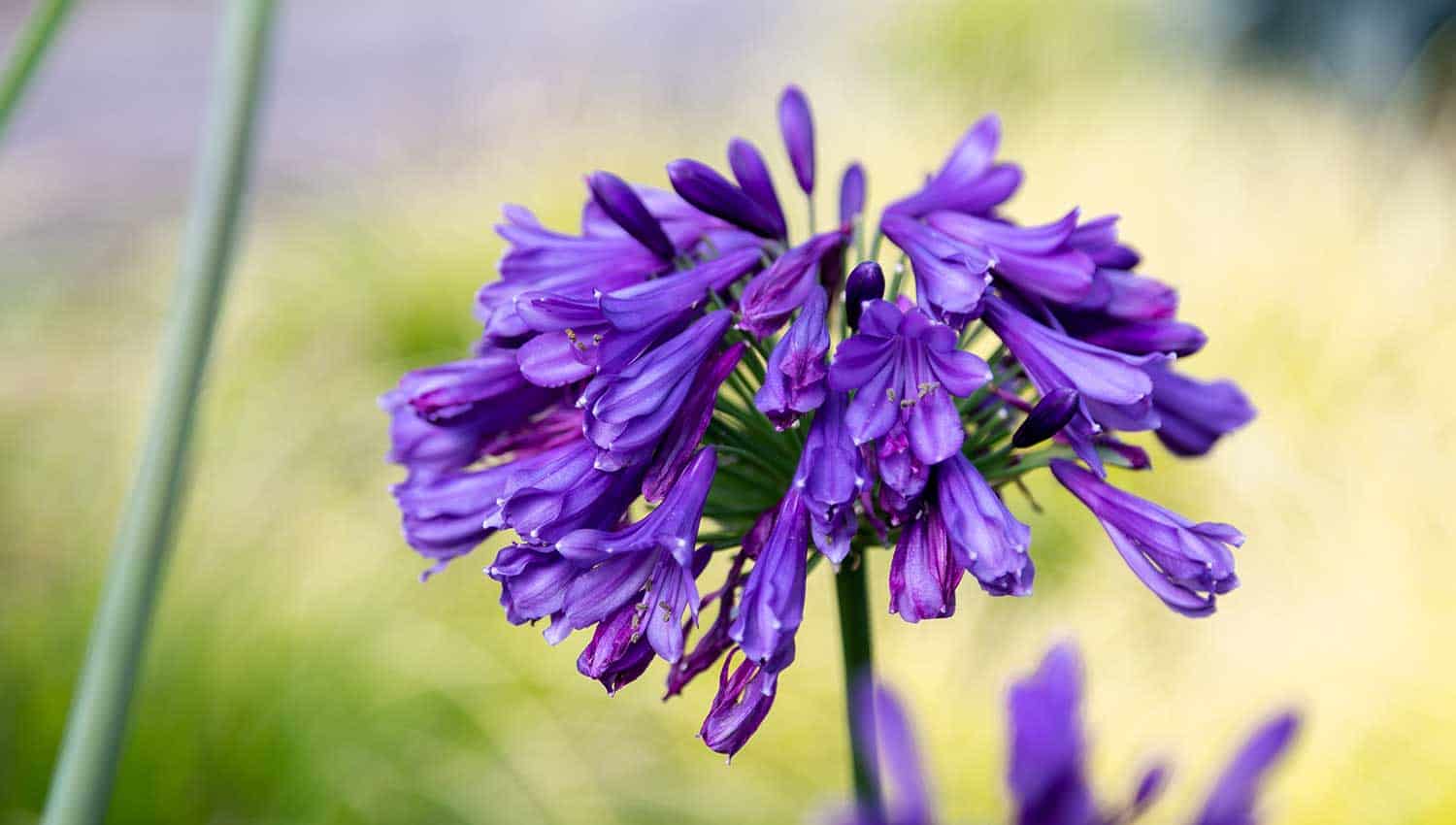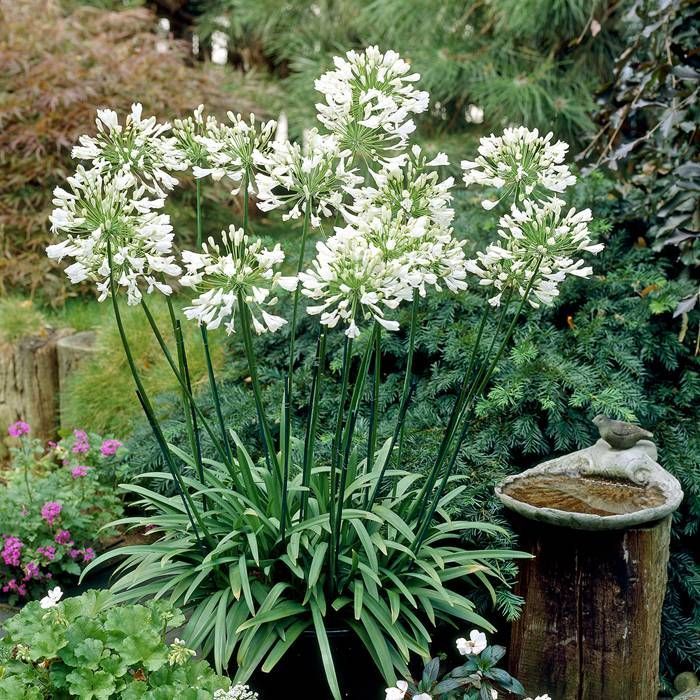Seasonal Agapanthus Treatment: Planning For Wintertime and Summertime
Seasonal Agapanthus Treatment: Planning For Wintertime and Summertime
Blog Article
Understanding the Art of Agapanthus Treatment: Essential Steps for Healthy Growth and Lively Blooms
In the world of gardening, the growing of agapanthus stands as a rewarding undertaking for those who look for to nurture these elegant blooming plants. With their striking flowers and graceful foliage, agapanthus has actually recorded the interest of gardeners worldwide. Nonetheless, attaining ideal growth and vibrant blossoms needs a nuanced method that encompasses different important actions. From picking the best selection to grasping trimming techniques, the journey towards cultivating flourishing agapanthus plants is complex and holds the essential to opening the full potential of these organic gems.

Selecting the Right Agapanthus Range

When picking the ideal Agapanthus selection for your garden, take into consideration variables such as climate viability, blossom shade, and growth behavior. Furthermore, think about the climate in your region to make sure the Agapanthus variety you pick can grow in your certain conditions. Recognizing the growth behavior of various Agapanthus varieties is essential for proper positioning within your yard.
Perfect Planting Problems
Considering the optimum environmental demands is essential for successful Agapanthus farming. Agapanthus plants are sensitive to chilly temperatures and must be protected from frost during wintertime months.
To ensure healthy and balanced development and vivid blossoms, plant Agapanthus bulbs at a deepness of about 2-4 inches and area them 8-12 inches apart. Adding natural issue, such as compost, to the dirt can boost water drainage and fertility, advertising robust root development. Mulching around the base of the plants helps preserve moisture and suppresses weed growth. Regular watering is important, particularly throughout the expanding season, to keep the soil constantly wet but not saturated.
Watering and Feeding Tips
Keeping proper dampness degrees and supplying important nutrients are crucial components in the treatment routine for Agapanthus plants. When it comes to sprinkling Agapanthus, it is crucial to strike a balance. These plants like continually damp dirt but are vulnerable to root rot if overwatered.
Feeding Agapanthus is crucial for advertising healthy and balanced growth and respected blooms. Use a balanced fertilizer, such as a 10-10-10 formula, in the very early springtime as new development arises. Repeat this application every 6-8 weeks throughout the growing season. Prevent too much fertilizing, as it can lead to lavish foliage at the expense of flowers. Constantly adhere to the producer's instructions for correct dilution and application methods. By complying with these watering and feeding pointers, you can ensure your Agapanthus plants flourish and produce vivid, durable blooms.
Trimming Techniques for Agapanthus
Pruning Agapanthus plants at the appropriate times and with proper methods is vital for preserving their health and wellness and promoting optimum development and blooming. The suitable time to prune Agapanthus is in late winter season or very early spring before brand-new development emerges.
For flowered stems, wait until the blooms have actually go to website withered and then trim them back to the base. This not only tidies up the plant's look however likewise urges the growth of brand-new flower buds. Deadheading spent blossoms can likewise reroute the plant's power into generating even more flowers rather than setting seeds. Nonetheless, if you intend to accumulate seeds for propagation, leave some blossoms to mature find here and dry on the plant.
Bear in mind to utilize tidy, sharp tools to make specific cuts and lower the threat of presenting conditions. Agapanthus. Regular pruning will help maintain your Agapanthus looking cool and healthy while ensuring an abundant display of gorgeous flowers
Taking Care Of Usual Bugs and Conditions
After making sure correct trimming strategies for Agapanthus, it is vital to resolve usual bugs and conditions that can impact the health and vitality of these plants. Agapanthus plants are usually sturdy but can still succumb to specific issues. One typical insect that impacts Agapanthus is the Agapanthus gall midge. click over here now This tiny, orange fly lays its eggs in the foliage, bring about distorted growth and flower buds that fall short to open up. To fight this insect, prune and destroy any affected plant components and think about making use of insecticidal soap.
In addition, Agapanthus plants can suffer from origin rot if they are planted in badly draining pipes dirt. By being attentive and taking prompt activity versus insects and diseases, you can help your Agapanthus plants thrive and generate lively flowers. Agapanthus.

Final Thought
In conclusion, grasping the art of agapanthus treatment includes choosing the right selection, offering ideal growing problems, appropriate watering and feeding, proper pruning techniques, and resolving common bugs and illness. By following these necessary steps, you can make sure healthy growth and lively flowers for your agapanthus plants. Remember to regularly keep an eye on and keep your plants to advertise their overall health and durability.
To guarantee healthy and balanced development and vivid blooms, plant Agapanthus light bulbs at a deepness of concerning 2-4 inches and room them 8-12 inches apart. By complying with these watering and fertilizing tips, you can guarantee your Agapanthus plants flourish and generate dynamic, lasting blossoms.
One typical parasite that impacts Agapanthus is the Agapanthus gall midget. Additionally, Agapanthus plants can experience from root rot if they are planted in badly draining pipes soil. By complying with these essential actions, you can guarantee healthy development and vibrant blooms for your agapanthus plants.
Report this page